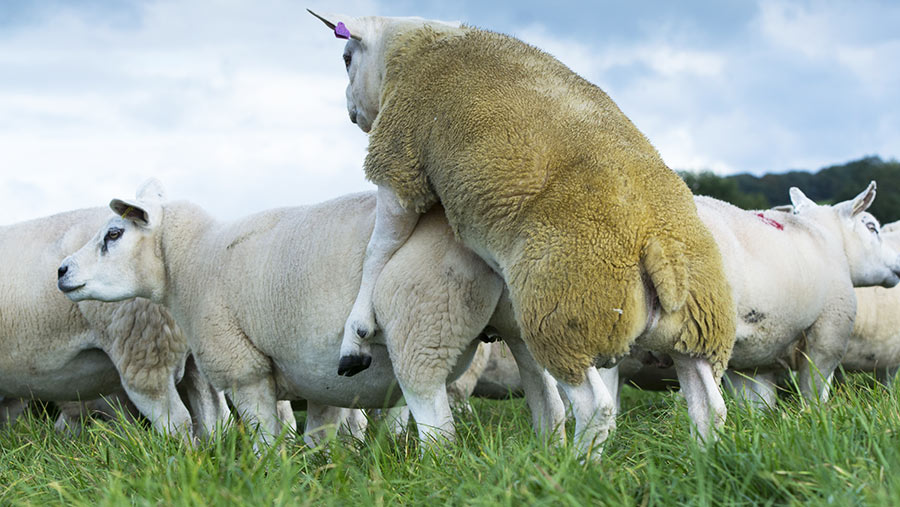New Estimated Breeding Value introduced to speed up lamb finishing times
 © FLPA/Shutterstock
© FLPA/Shutterstock Sheep producers can influence the speed lambs reach slaughter weights thanks to a new Days to Slaughter Estimated Breeding Value (EBV).
The EBV has been created as a result of the Ram Compare project, which has been running for the past five years.
The new EBV indicates the degree to which sire choice can influence the speed that lambs reach slaughter weight. More than a quarter of the variation seen in this trait can be attributed to a lamb’s genetics, with important genetic differences between rams.
Reducing the number of days to slaughter can improve farm profitability and reduce a farm’s carbon footprint.
New EBVs have also been added for primal yield and tenderness.
See also: Signet adds seven EBVs to terminal sire index
This year, Signet Breeding Services launched the biggest change to its terminal sire recording programme, moving the assessment of carcass traits such as muscle and fat depth onto a weight, rather than age, adjusted basis.
The move has enhanced the commercial focus of these widely used EBVs for producers selecting lambs at a fixed slaughter weight.
Signet manager Samuel Boon said: “This development has been a massive change, but the latest RamCompare results show the value of our decision.
“A much clearer relationship is now apparent between the carcass traits measured on-farm, like muscle depth and fat depth, and those assessed in the abattoir – carcass conformation and fat classification.”
Sheep farmer benefits
Northumberland sheep farmer Duncan Nelless, Thistleyhaugh Farm, has recorded 2,200 lambs for RamCompare and has seen the benefits of using recorded rams.
Last year the lambs, which are born in March and finished on clover-rich swards from June to September, had an average carcass weight of 18.4kg at 103 days old.
Despite using high genetic merit rams and getting excellent results, there was still 14 days of genetic variation between the best and worst performing sires when it came to the time taken to reach slaughter weight.
He said: “Since being involved in RamCompare, we have clearly seen the benefit of using recorded rams. We are convinced of the importance of selecting rams with EBVs, and access to new information on traits like days to slaughter will help refine ram selection decisions.”
What is RamCompare?
The five-year RamCompare project takes nominated Signet-recorded rams from various terminal sire breeds and uses them on nine commercial farms in the UK.
Three years in, the project has already tested 138 rams and more than 12,000 of their progeny.
Rams are selected on the basis of their EBVs, which are a direct assessment of their breeding merit for specific traits.
Through information collected on their progeny, the project re-assesses their genetic worth for traits that are measured on-farm, such as lamb growth rate, ultrasound muscle and fat depth.
Abattoir data is then collected from these lambs to produce EBVs for traits for which farmers are actually paid – carcass weight, conformation and fat classification.
